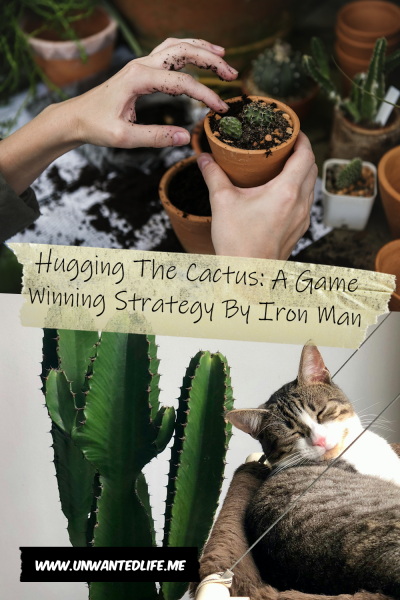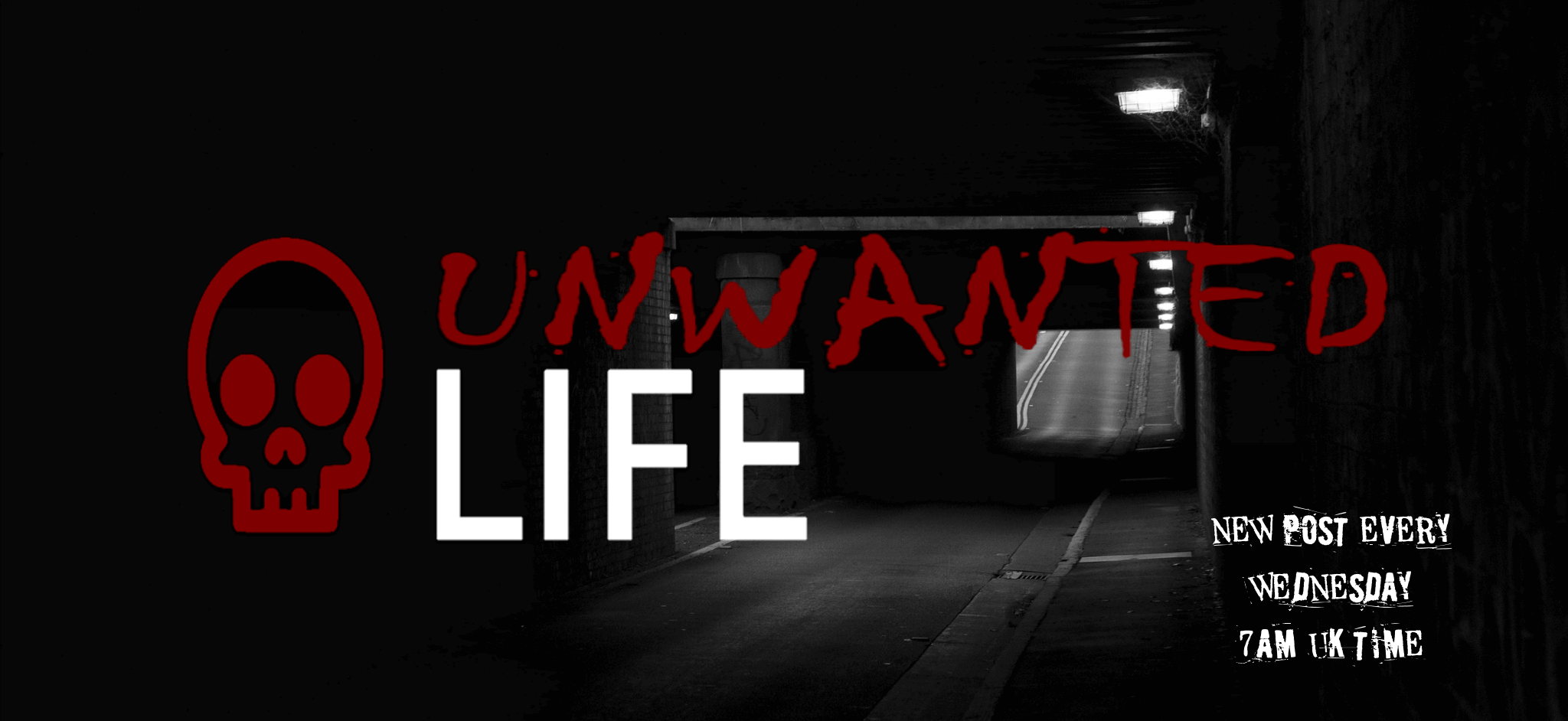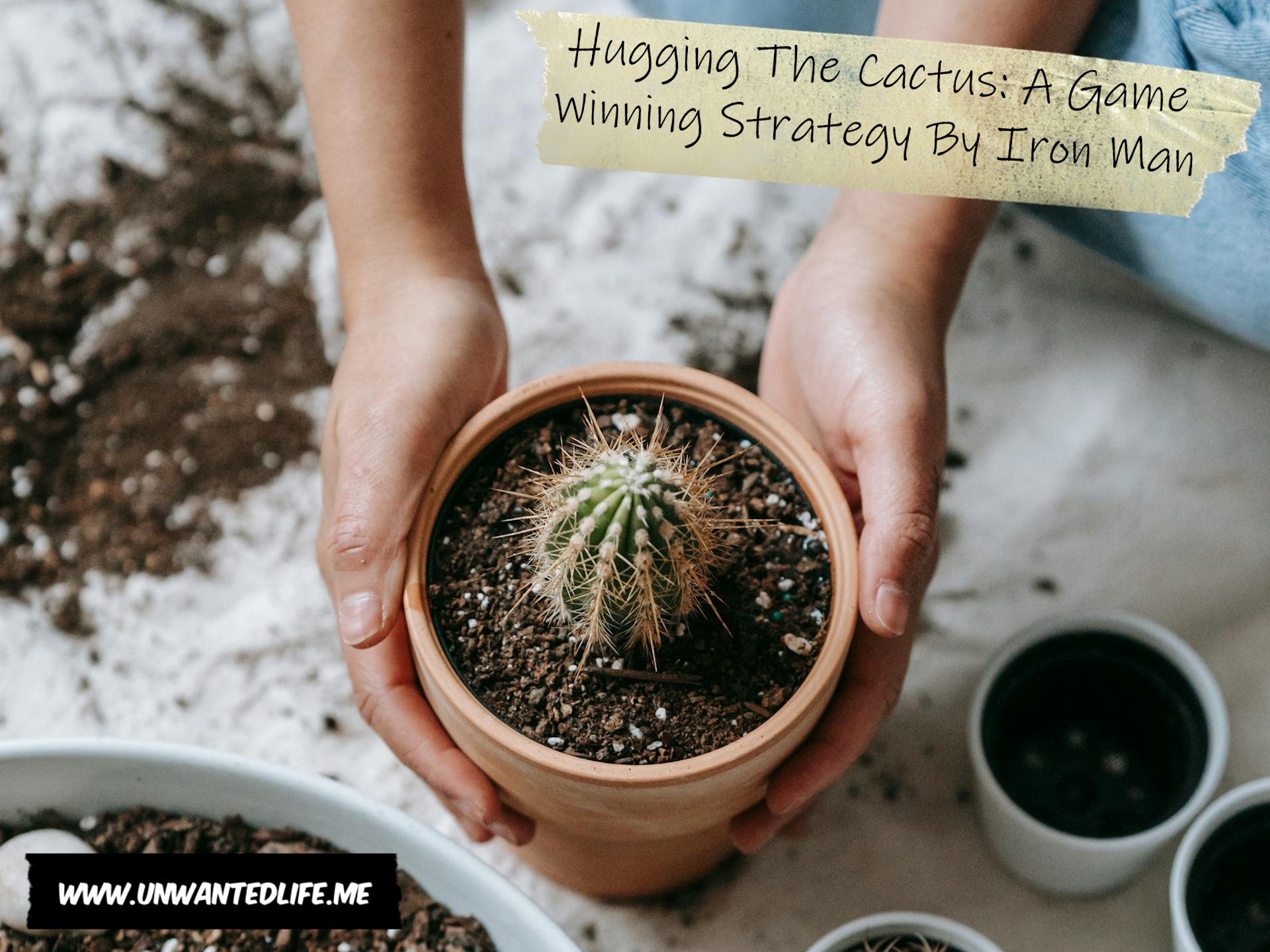Having worked in addiction, I know how hard it can be to face the difficulties that hamper recovery, and a big part of that is learning that hugging the cactus can be a game-changer. But it’s not just something that can help with addiction. Keep reading to find out more.
Hugging The Cactus
Iron Man, aka Robert Downey Jr., coined the phrase “hugging the cactus” after speaking to Mel Gibson about the difficulties he was experiencing at the time, which included addiction issues. According to Borisewich (2024), Robert Downey Jr. first introduced the phrase, hugging the cactus, in an interview when talking about his struggles with substance abuse. The essence of what hugging the cactus meant for Robert Downey Jr. is as follows:
Accepting responsibility
It was about facing and accepting responsibility for his past wrongdoings and mistakes, rather than running from them or denying them. There’s a reason this is a step in 12-step programmes, as it’s these things that we often try to avoid and forget about that lead back to drinking, gambling, sex, and substance misuse.
Embracing the “ugly” parts
Apparently, Mel Gibson suggested that Robert Downey Jr. should embrace the “ugly” parts of his soul, the uncomfortable truths about himself and his actions. This is essentially a form of acceptance through the use of shadow work.
Shadow work is a form of psychotherapy that focuses on the parts we hate or try to keep hidden, which is based on Carl Jung’s concept of the “shadow self” (Villines, 2022). At its core, it’s about not avoiding the parts of ourselves we’d rather ignore, avoid, or pretend don’t exist.
Developing humility
The idea was that by hugging the cactus (confronting these painful realities) long enough, he would develop humility. As a Hollywood star, this is probably quite important, as egos and diva behaviours can be common when a person gets sucked into the hype about them.
New meaning in life
As I’ve talked about in a few articles before, we greatly benefit from having a sense of meaning in our lives, whatever form that may take. Thus, the process for Robert Downey Jr., though painful, would ultimately lead to his life taking on a new and more meaningful direction. This can be difficult for any of us when we’re at a turning point in life, but especially if we’re struggling with some form of addiction.
Hugging The Cactus And Addiction
One of the key characteristics of addiction is how the target of our addiction is used to avoid difficult emotions and negative mood (Sheynin et al., 2016). Think, going to the pub for a couple of beers because we’ve had a stressful day, or reaching for that bottle of wine after arguing with our partners.
A study by Qorbanalipour, Alilou, and Zardi Nahr (2025), which comprised 250 participants from the Islamic Azad University, Khoy Branch, found that distress tolerance (or lack thereof) predicted addiction tendencies in students (28%), with experiential avoidance also being another predictor at 17%.
Given that this is an Islamic university, where Islam has rules to avoid using substances that will undermine the protection of mental clarity and bodily integrity (Faizan, 2025), this might not be the best example of a study. Even though there are exceptions where there’s a valid need to use certain substances. This is my simplified understanding of a religion I know little about, so please forgive me if I’m misinterpreting this.
That said, their findings support the consensus on addiction. One such study that supports this comes from Thomas, Allen, Phillips, and Karantzas (2011). They state that life stressors and avoidance coping are positively related to avoidance-motivated gambling, which is consistent with stress, coping, and addiction theory.
Thus, people with alcohol dependency often drink to change their moods, gamblers often gamble to block out their problems, and people who use substances or have substance dependency often use to escape from reality, manage stress, and avoid withdrawal symptoms (Sheynin et al., 2016). This is one of the reasons substance and alcohol dependency is often linked to abuse and trauma as an unhealthy coping strategy.
In the context of addiction, hugging the cactus means acknowledging the impact of the addiction and taking responsibility for one’s actions, which can be a crucial step in recovery. This is because addiction doesn’t only affect us; it can have a very significant effect on the people around us, and even our communities. It’s about acknowledging and accepting how our addiction harmed us and others, through lies, deceit, and other harm caused (Borisewich, 2024). Otherwise, this can derail recovery for a lot of people.
How To Embrace The Ugly Parts By Hugging The Cactus
When embracing discomfort, the “cactus” represents the painful, challenging, or unpleasant aspects of a situation, such as addiction, grief, or personal flaws. Thus, hugging the cactus means actively choosing to face these challenges rather than avoiding them. Something we’re not good at as humans. We’re so used to avoiding the things that make us uncomfortable, and the more uncomfortable something makes us, the more we do to try to avoid it.
The problem is we perceive discomfort as a danger signal when, more often than not, it’s not. When we avoid things because of this perception of discomfort, it weakens us overall. It’ll hurt our confidence and our sense of our capabilities (Schulman, 2025).
Unfortunately, change and personal growth require us to embrace the discomfort, to bear hug that cactus. By confronting these difficulties, we can learn, heal, and ultimately grow as a person. Because growth often comes from the most uncomfortable and challenging situations (Borisewich, 2024).
One of my favourite forms of therapy is exposure therapy, and that is all about exposing people to what they thought was intolerable, so they can learn that it’s not. They become comfortable in the uncomfortable, and I find it’s very effective. It helped me overcome 15 years of anxiety-causing psychosis.
For example, when it comes to driving, if we start to avoid aspects of driving that we don’t like, we develop avoidance-based coping strategies (Cahour, 2008). If someone doesn’t like driving on a motorway, they’ll start avoiding driving on a motorway altogether. However, if we push ourselves to drive on motorways more, that will hopefully lead to the extinction of that fear. There are even advanced driving lessons for this.

Thus, recovery and personal growth involve a level of discomfort that we have to experience for change to happen (Woolley and Fishbach, 2022). Leaving our comfort zones and doing the things we find challenging strengthens key regions in our brains (Schulman, 2025). It helps with our decision-making skills and with building resilience. While avoidance of hugging the cactus has the opposite effect.
Therefore, accept our mistakes, because to err is human, and nobody is perfect. Whip out a journal and explore the sides of ourselves we’d rather ignore, and confront and accept that part of us. But also acknowledge that this stuff is in the past. If we see a challenge, then don’t run away from it. Unless it’s something like trying to jump a drawbridge that’s opening in your car.
Also, remember that you don’t have to do these things alone. Whether that be friends, family, colleagues, or organisations.
So embrace the suck (Schulman, 2025). Hug the cactus.
But also remember to look for meaning in our lives. Not everyone needs meaning, but for a lot of us, we do. Finding that meaning can take many forms; it can be found in the work we do, our families, our good deeds, our hobbies, and basically in pretty much anything.
Summary
In essence, for Robert Downey Jr., hugging the cactus became a metaphor for courageously confronting one’s deepest flaws, past mistakes, and painful realities to achieve personal growth, humility, and ultimately, redemption and a more meaningful life. It’s about not avoiding the discomfort but moving through it to heal and transform. This is a powerful concept, especially given his very public journey of recovery and resurgence in his career.
As always, leave your feedback in the comments section below. Also, please share your experiences with hugging the cactus and leaving your comfort zone in the comments section below as well. Don’t forget, if you want to stay up-to-date with my blog, you can sign up for my newsletter below. Alternatively, click the red bell icon in the bottom right corner to get push notifications for new articles.
Lastly, if you’d like to support my blog, please find the PayPal and Ko-fi donation payment options below. Until next time, Unwanted Life readers.
References
Borisewich, K. (2024, October). “Huggin the Cactus” on the way to recovery. K.R.E.A.M. Retrieved from https://www.kream-blog.com/blog/hugging-the-cactus.
Cahour, B. (2008, January). Discomfort, affects and coping strategies in driving activity. In Proceedings of the 15th European conference on Cognitive ergonomics: the ergonomics of cool interaction (pp. 1-7). Retrieved from https://hal.science/hal-00671729/document.
Faizan, S. (2025, July). Are all intoxicants haram? Understanding Mind-Altering Substances in Islamic Law – Al Balagh Academy. Al Balagh Academy. Retrieved from https://www.albalaghacademy.org/blog/are-all-intoxicants-haram.
Qorbanalipour, M., Alilou, S., & Zardi Nahr, A. (2025). The Role of Feeling of Inferiority and Distress Tolerance in Predicting the Tendency to Addiction According to the Mediator Role of Experiential Avoidance in College Students. Research in Cognitive and Behavioral Sciences, 15(1), 23-44. Retrieved from https://cbs.ui.ac.ir/article_29617.html.
Schulman, J. (2025, May). What Marines teach us about growth, grit, and doing hard things. Psychology Today. Retrieved from https://www.psychologytoday.com/us/blog/the-science-of-bravery/202505/embrace-the-suck-why-discomfort-builds-a-better-you.
Sheynin, J., Moustafa, A. A., Beck, K. D., Servatius, R. J., Casbolt, P. A., Haber, P., Elsayed, M., Hogarth, L., & Myers, C. E. (2016). Exaggerated acquisition and resistance to extinction of avoidance behavior in treated heroin-dependent men. The Journal of Clinical Psychiatry, 77(3), 386–394. Retrieved from https://doi.org/10.4088/JCP.14m09284 and https://pmc.ncbi.nlm.nih.gov/articles/PMC4822714.
Thomas, A. C., Allen, F. L., Phillips, J., & Karantzas, G. (2011). Gaming machine addiction: the role of avoidance, accessibility and social support. Psychology of Addictive Behaviors, 25(4), 738. Retrieved from https://www.researchgate.net/profile/Anna-Thomas-24/publication/51554189_Gaming_Machine_Addiction_The_Role_of_Avoidance_Accessibility_and_Social_Support/links/546003da0cf27487b450ad90/Gaming-Machine-Addiction-The-Role-of-Avoidance-Accessibility-and-Social-Support.pdf.
Villines, Z. (2022). What is shadow work? What to know. MedicalNewsToday. Retrieved from https://www.medicalnewstoday.com/articles/what-is-shadow-work.
Woolley, K., & Fishbach, A. (2022). Motivating personal growth by seeking discomfort. Psychological Science, 33(4), 510-523. Retrieved from https://kaitlinwoolley.com/wp-content/uploads/2023/03/woolleyfishbach2022.pdf.


You unpacked this metaphor in such a way, makes it memorable. What it truly means to face discomfort head on.
Thanks for commenting
The concept of hugging the cactus is insightful. I appreciate how it connects personal challenges to broader themes of resilience and finding meaning
This is the first time I heard of hugging the cactus game. It sounds good for soul healing. I’ve been doing the mirror practice so far. It does help. But reading your post makes wanna try hugging the cactus as well. It fascinates me. Thank you for sharing.
Thanks for commenting
This article offers a powerful and relatable perspective on addiction and recovery. The concept of hugging the cactus resonates deeply, emphasizing the importance of confronting uncomfortable truths for personal growth and healing. Insightful and thought-provoking read!
🤍🤍🤍🤍🤍🤍🤍🤍
This article deeply resonated with me, especially the concept of hugging the cactus. It powerfully emphasizes confronting uncomfortable truths for growth, a message we all need to hear
This was a really insightful read! The concept of hugging the cactus is powerful and relatable. It encourages confronting difficult truths, which is essential for growth and recovery. Great job exploring this meaningful idea!
This was a thought-provoking read! The concept of hugging the cactus really resonated, especially how it ties addiction to avoidance and the need for confronting uncomfortable truths for growth. Insightful and well-explained
This was a really insightful read! The concept of hugging the cactus is powerful and relatable. It made me think deeply about confronting my own uncomfortable truths.
This was a really insightful read! The concept of hugging the cactus is powerful and relatable. It encourages facing discomfort head-on, which is crucial for growth and recovery. Great job explaining this metaphor
This article offers a profound insight into addiction and recovery, emphasizing the importance of confronting uncomfortable truths for personal growth. The concept of hugging the cactus is both metaphorically rich and practically helpful. I appreciate how it combines psychological theory with relatable examples, making the path to recovery seem more achievable. Its a reminder that facing our flaws is courage, not weakness